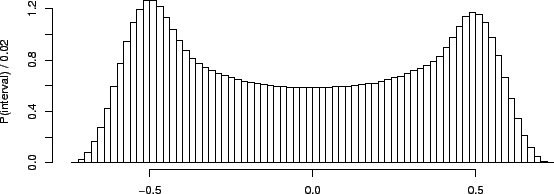Next: Some remarks on the Up: A defense of Columbo Previous: Intuitions versus formal, possibly
 |
This is true in general, even in fields of research that are considered by outsider to be the realm of objectivity, where only `facts' count. Stated with Peter Galison words [20],
``Experiments begin and end in a matrix of beliefs. ...beliefs in instrument type, in programs of experiment enquiry, in the trained, individual judgments about every local behavior of pieces of apparatus.''My preferred toy examples to convey this important messages are the three box problem(s)' and the two envelopes `paradox' (see section 3.13 of Ref. [3] - I remind briefly here only the box ones). The box problems are a series of recreational/educational problems, the basic one being rather famous as `Monthy Hall problem'. The great majority of people (my usual target are physics PhD students) get mad with them because they have not been educated to take into account all available information. Therefore they have quite some difficulties to understand that if a contestant has taken one box (yet unopened) and there is still another un-opened box to choose, the probability that this box contains the prize (only one of the three boxes does) depends on whether the opened (and empty) box was got by chance or was chosen with the intention to take a box without prize.44(And there is often somebody in the audience that when he/she listens the formulation of the problem in which the box was opened by chance, he/she smiles at the others, and than gives the solution...of the version in which the conductor opens on purpose and empty box.)Then, taking as an example the discovery of the positron:
![$ ]$](img259.png)
``Taken out of time there is no sense to the judgment that Anderson's track 75 is a positive electron; its textbook reproduction has been denuded of the prior experience that made Anderson confident in the cloud chamber, the magnet, the optics, and the photography.''
I found that the issue of considering into account all available information is shown in a particular convincing way in the `three prisoner paradox' (isomorph45 to Monthy Hall, but more a headache than this, perhaps because it involves humans) and in the `thousand prisoner problem' of Ref. [21]: not only bare facts enter the evaluation of probability, but also all contextual knowledge about them, including the question asked to acquire their knowledge.
Giulio D'Agostini 2010-09-30